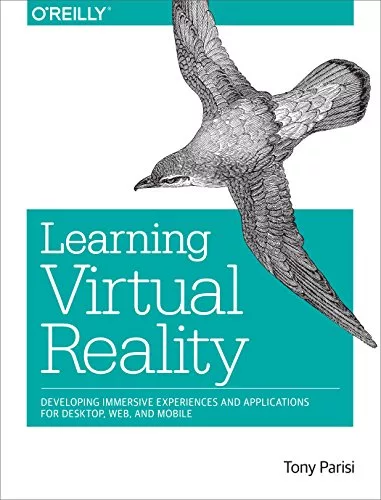HTML Headings are as follow:
Learning Virtual Reality: Developing Immersive Experiences and Applications for Desktop, Web, and Mobile
Understanding Virtual Reality
Virtual Reality (VR) is a technology that allows users to experience a computer-generated virtual environment in a realistic and immersive way. It has gained significant popularity in recent years, with advancements in hardware and software making it more accessible to the masses.
Developing for Desktop VR
Developing applications for desktop VR involves creating experiences that can be accessed through high-end VR headsets, such as the Oculus Rift or HTC Vive. These headsets provide a fully immersive experience with hand tracking, positional tracking, and high-resolution displays. Developers can use game engines like Unity or Unreal Engine to build interactive VR environments and applications.
Tools and Software
To create VR experiences for desktop, developers will need to familiarize themselves with VR development tools and software. These tools provide a framework to build virtual worlds, create 3D assets, and implement interactive elements. Unity and Unreal Engine are both widely used game engines that offer comprehensive VR support and a range of development resources.
User Interface and Interactivity
Designing user interfaces (UI) for VR applications is a crucial aspect of creating immersive experiences. VR provides unique opportunities for interaction, including hand gestures, voice commands, or even body movements. Developers should focus on designing intuitive and user-friendly UI elements that enhance the overall virtual experience.
Web-based VR
Web-based VR allows users to access virtual reality experiences directly through a web browser without the need for dedicated hardware or software installations. This approach uses WebVR, a JavaScript API that enables web developers to create VR experiences compatible with different VR devices.
Creating Web-based VR Experiences
To create web-based VR experiences, developers can use frameworks like A-Frame, Three.js, or Babylon.js. These frameworks provide an abstraction layer, simplifying the process of building VR experiences for the web. By combining HTML, CSS, and JavaScript, developers can create interactive 3D scenes, add immersive effects, and integrate user input.
WebVR Compatibility
Ensuring compatibility across different browsers and VR devices is essential when developing for web-based VR. WebVR provides a polyfill library that enables support for a wide range of devices and browsers. Developers should also consider performance optimizations since web-based VR experiences run within the browser environment.
Mobile VR
Mobile VR offers a more portable and accessible virtual reality experience, using smartphones or standalone VR headsets like the Oculus Quest. Developing for mobile VR involves creating applications that can run smoothly on lower-powered hardware while still providing immersive experiences.
Unity and Unreal Engine
Unity and Unreal Engine also support mobile VR development, allowing developers to build cross-platform applications for both desktop and mobile VR. These game engines provide optimized rendering techniques, asset optimization tools, and performance monitoring options to ensure a smooth VR experience on mobile devices.
Mobile VR SDKs
Mobile VR development often requires integration with software development kits (SDKs) provided by the headset manufacturers. Oculus Mobile SDK, Google VR SDK, and Samsung Gear VR SDK are some popular options that offer libraries, tools, and APIs to build mobile VR applications. These SDKs provide access to sensor data, controller input, and rendering optimizations.
In conclusion, learning how to develop virtual reality experiences and applications for desktop, web, and mobile platforms requires understanding the specific requirements and tools for each platform. Whether it’s building interactive environments for desktop VR using Unity or Unreal Engine, creating web-based VR experiences using frameworks like A-Frame, or developing for mobile VR using SDKs like Oculus Mobile SDK, the possibilities for immersive and engaging VR applications are vast. As VR technology continues to evolve, there will be even more opportunities for developers to explore and create innovative VR experiences.
Product Description:
| Publisher | O’Reilly Media; 1st edition (December 15, 2015) |
|---|---|
| Language | English |
| Paperback | 169 pages |
| ISBN-10 | 1491922834 |
| ISBN-13 | 978-1491922835 |
| Item Weight | 10.7 ounces |
| Dimensions | 7.01 x 0.37 x 9.17 inches |
Product Rating: 4
Price: $16.93
(as of Sep 24, 2023 14:04:52 UTC – Details)
Disclaimer: This blog post may contain affiliate links for products sold on Amazon.com. If you make a purchase through one of these links, we may earn a small commission at no additional cost to you. All opinions expressed here are our own and we only promote products that we have tested and believe in. The Univer Geek Team


